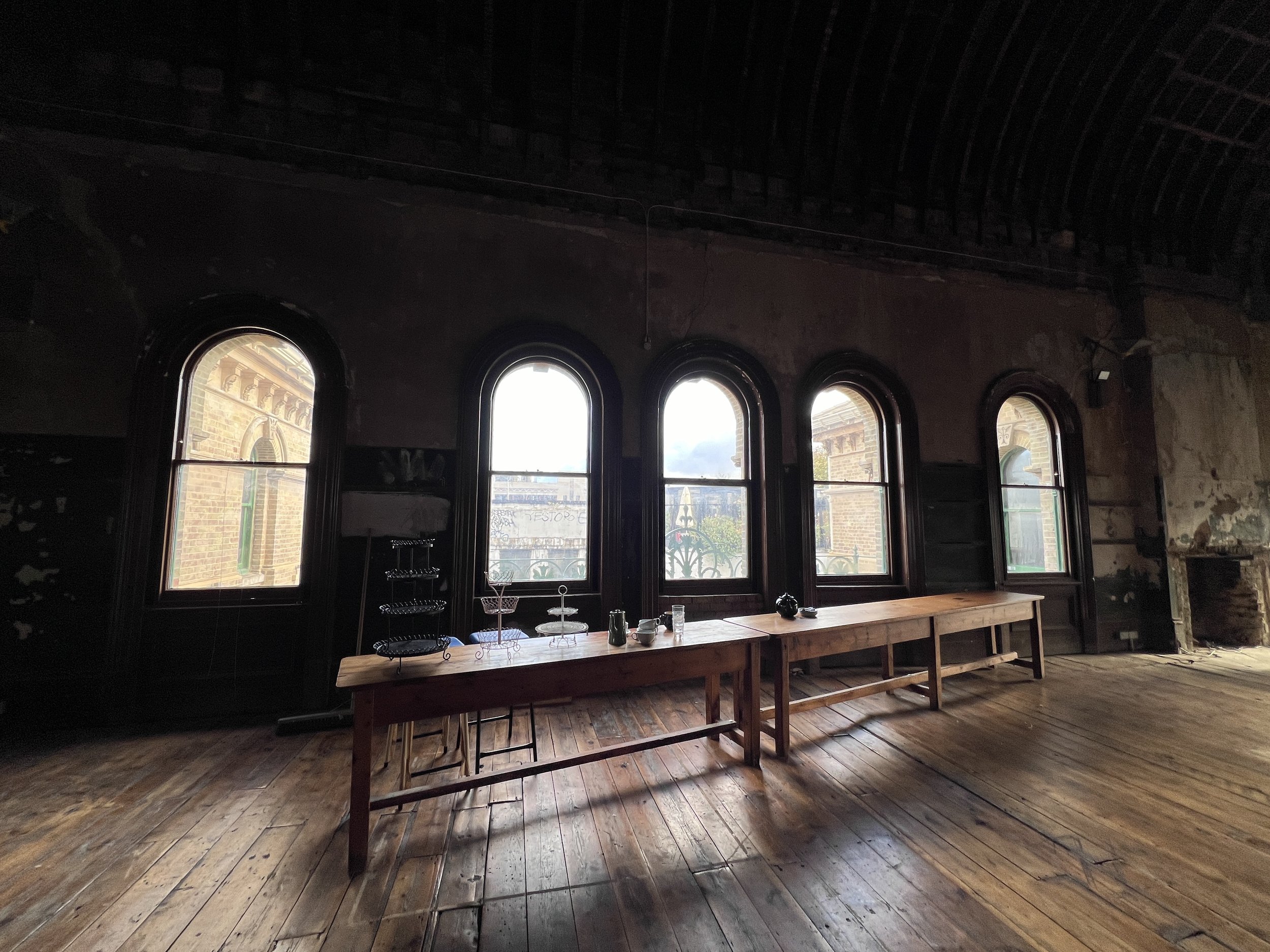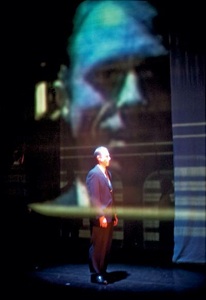Still Lives
‘Do you think he escapes?’
‘Who?’
‘The hare.’
‘What makes you thinks it’s a “he”?’ she says.
‘Just a feeling,’ I say.
And she looks at me and she says, ‘I don’t think so. I don’t think he stands a chance.’
And that is how it started.
Still Lives, Old Waiting Room, Peckham Rye Station, 17-18 November 2023
My friend and colleague, the director Rebecca McCutcheon, has been involved in plans to develop the Old Waiting Room at Peckham Rye Station as a performance space. It is, as the name suggested, the station was opened in 1866 but the first-class waiting room fell into disuse (perhaps with the decline of first-class ticket holders). It was converted into a billiard hall for a while but closed in the 1960s. It is a very large space with a series of arched windows all around it, wooden high roof and floor, four disused fireplaces and doors leading onto the platform and to a beautiful Victorian staircase.
Becs was drawn to the Old Waiting Room both as a Peckham local but also as a practitioner in site-specific or site-responsive work: that is theatre work that isn’t just a self-contained entity plonked into a neutral space but exists in dialogue with that space, alive to the history, the messiness, the jaggedness and liveness of the space. The Waiting Room shows its 150-year history; it displays many signs of its changing functions; it is open to the local area. And Becs’s idea was to do a production of Noël Coward’s Still Life.
Still Life is one of the ten one-act plays Coward wrote in the mid-1930s under the collective title To-night at 8:30, which he and Gertrude Lawrence performed in a cyclical series of triple bills. This play was quite a late addition to the sequence, though became one of the most enduring, because of its expansion into the film Brief Encounter. The play version is in five scenes, covering a one-year period, and shows the beginning and end of an adulterous romance between Laura, a housewife, and Alec, a doctor. For our purposes, most interesting is that the location for all the scenes is a railway station waiting room.
Becs wanted to see how the play would respond to the space but was also interested in how the play held up and whether it might benefit from some reworking or development. This is where I came in; she knew I was a fan of mid-century theatre and thought I might be able to do some dramaturgical work. When we did some work on it, read-throughs and more, it became very clear that it is an exquisite play that entirely works. It did not need rewriting as such.
But it is short and we became interested in the location of the play; a waiting room as a train junction is a very clever and elegant setting for a play about strangers meeting, casual encounters, anonymous transgressions. The play itself has various stories around it: a budding relationship between the waiting room’s cafe proprietress Myrtle and the station guard Albert; a more one-sided pursuit on Beryl by Stanley, two other members of station staff. But we also see some lewd soldiers on leave, hear about affairs and divorces, Beryl’s ailing mother, the home life of the station manager Mr Saunders, and more. Coward populates the world around the action with great skill. We wondered if it might be possible to amplify and expand the stories around Alec and Laura without damaging their delicate and beautiful rise and fall.
I remembered Quadrille, another Coward play, from 1952, which was bookended by scenes in a station waiting room. I wondered if we might be able to introduce those scenes to Still Life. We worked on them and we were enthused by the wit and elegance of the scenes and their faint parallels with Still Life: the first scene shows two married people eloping; in the last, their jilted spouses also meet ready to run off together.
It was not a simple cut and paste job. Quadrille is set in the 1870s, so this needed some finessing. The final scene, naturally, follows a longer process of the jilted pair getting to know each other so I decided to construct a scene from fragments taken from the whole play to give us a scene where two people meet on one basis but unexpectedly fall in love. This involved a little creation of new connecting tissue, using the principle ‘what would Noël have done?’ Adding the two scenes also meant integrating them into the scene, ensuring that Myrtle and Albert attend to the newcomers too. Oh and in a nod to the multiplication of the stories we adjusted the title to Still Lives.
Finally, Becs was keen to use the transitions between scenes to show the passing of time (the scenes follow the seasons - Spring to Spring) and to open out the play stylistically. We got interested in Stanley’s vigorous sexual appetite and I wrote a train-themed hymn to the rising sap of Spring. I also noted a reference in the final scene to mutual friends who were getting a divorce because the husband had been having an affair he met in the Tate Gallery; I thought that character might become a valuable presence and wrote a description of their meeting in front of Turner’s great picture of a steam train, Rain, Steam and Speed (1844). I wrote those on the first day of rehearsal: I love writing in a rehearsal room - the atmosphere, the energy, the intensity is hugely creative.
We got Arts Council money for a week’s development and did two showings on 17 and 18 November 2023 to a big enthusiastic audience. I think there’s a lot of potential in this so let’s see where it goes now.



![photo[1].jpg](https://images.squarespace-cdn.com/content/v1/513c543ce4b0abff73bc0a82/1362919072201-PZO854G4SEB794DVOEI8/photo%5B1%5D.jpg)
